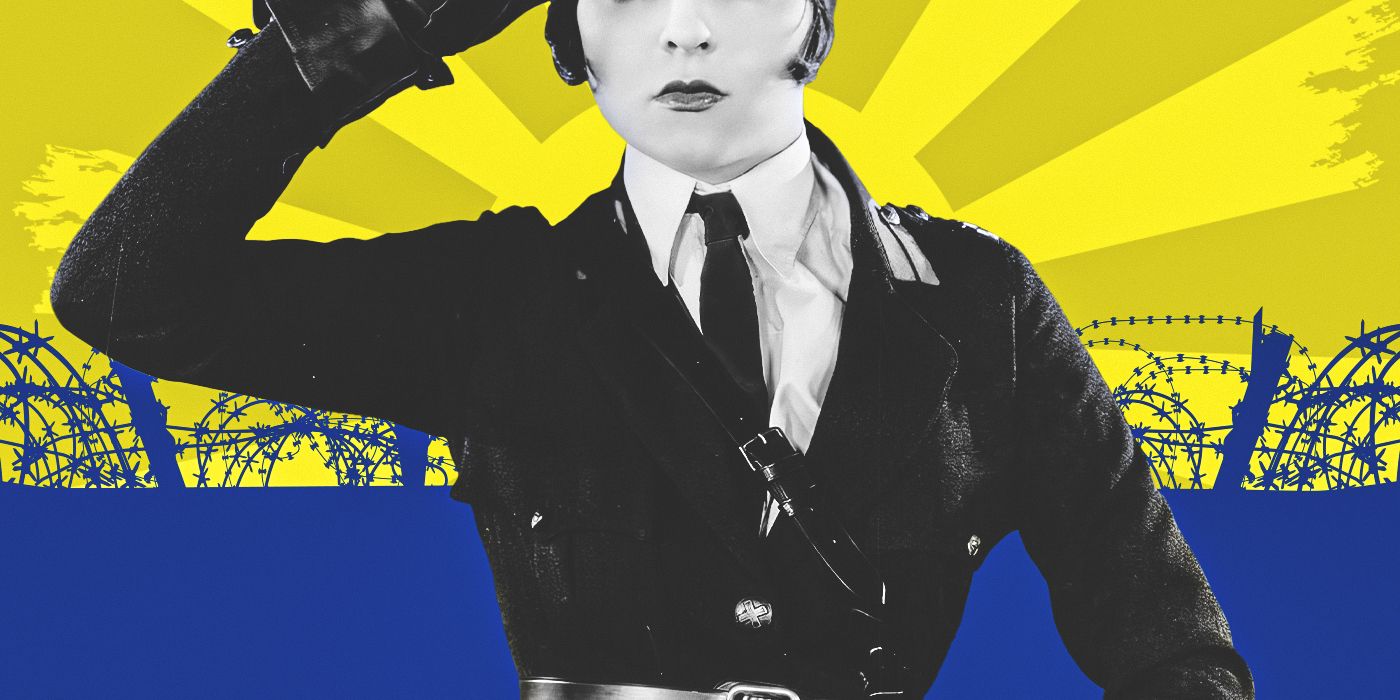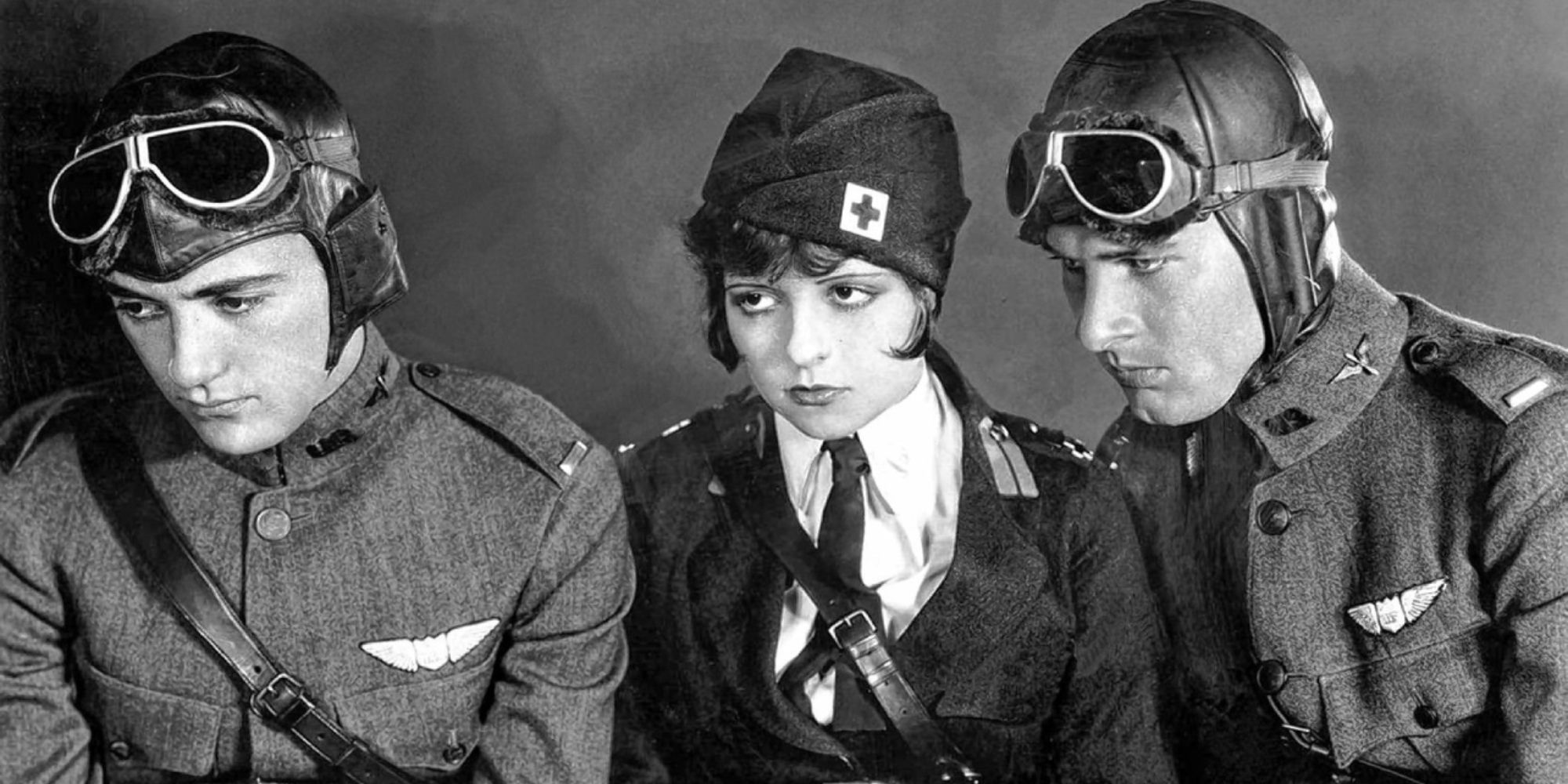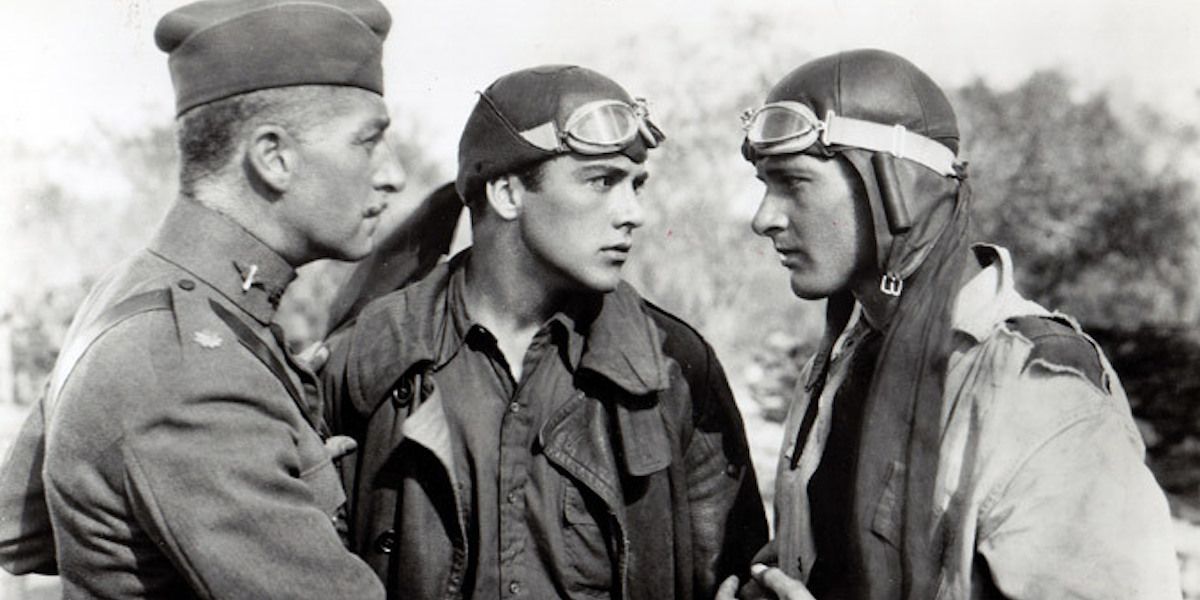Wings may have flown into theaters close to a century ago, but that does not mean it isn't worth a watch. The first best picture winner (or rather, at the time, "Outstanding Picture") won the award for good reason. Its production design is stunning, even by today's standards. The film is shot stunningly and even shows off technical marvels like its iconic tracking shot through a dining room and real aviation. But what transcends the years is the heart of the film, the love and friendship between the two leads Jack Powell (Charles 'Buddy' Rogers) and David Armstrong (Richard Arlen) as they make their way through the war. "Buddy" war movies are no stranger to us either, simply look at 1917 just a few years ago. Yet still, there's a certain magic within Wings that we rarely see today.
'Wings' Is a Silent Film Time Capsule
Of course, a silent film from 1927 is going to be quite a different experience from a film today. Wings lets us into an interpretation of a bygone era through its filmmaking, acting, and set design. Being a silent film, dialogue is of course handled through cards. For those that might be apprehensive about this now foreign way of storytelling, it becomes as natural as subtitles when watching the film. It's presented in sepia tones, much like the Kansas segments of The Wizard of Oz, but night scenes are presented in a rich blue that sets itself apart. The film features small scenes of animated special effects, including painted fire when planes are shot down, and a comedic scene where bubbles surround a drunken Jack. The film has one of the most impressive tracking shots, moving through dining tables until we eventually get to Jack. Even the aviation scenes were real, planes strapped with cameras to be operated in the skies. This is incredibly impressive, seeing as how nearly a century later, Top Gun: Maverick did much the same.
Nearly a century is a long period for things to change. And indeed they did change. The film industry underwent a massive change when the Hays Code was enforced from 1934 to 1968. This meant no nudity, no swearing, minimal violence, and overall tameness that affected all films. Alfred Hitchcock famously had to fight to show a toilet on screen in Psycho, so it might be shocking to realize Wings had nudity and a same-sex kiss less than a decade before the restrictive code was enforced on filmmakers. As this film predates this mark on film history, contemporary audiences may find that the film is much closer to the filmmaking we have today rather than what they remember as "classic Hollywood." Wings was allowed to have an edge that makes it a thrilling experience, with this friendship at its center.
Why 'Wings' Jack & David Still Resonate Today
While there is a sort-of love triangle conflict that plays throughout the film, the heart comes from the growing bond between these two pilots. Vying for the same woman, the two of them become rivals quickly, but eventually grow to trust each other, and become close friends. War movies focusing on a close bond between men aren't new, well, perhaps it was a little new back then. Contemporary audiences however are used to this story, it's been told over and over again in major blockbusters like the Michael Bay-directed Pearl Harbor which has a very similar plot. But this film has one thing these later films lack: a different view on masculinity.
There are certainly many ways to view the film. The straightforward plot presented here of Jack and David bonding through wartime ends in tragedy. What's interesting is how intimate these scenes are. It's certainly something that would never be done today under the same context. Take the end of Top Gun: Maverick, Goose (Miles Teller) and Hangman (Glen Powell) share a very similar narrative with Jack and David. Enemies to respective friends bonded through their experiences (they're even pilots!). But their relationship to each other never comes as close as Jack and David's. The only physical intimacy they share in the end is their handshake showing their newfound comradery, although their character arc is essentially the same as Jack and David's. Jack and David get to be close, in one of the later scenes David lies in Jacks arms, and they share a kiss as he dies. Today, it is very hard to view this film as just a friendship. Even then, the term "friendship" has loose enough bounds in the time to allow different (and perhaps more fitting) interpretations.
'Wings' Goes Down in Queer History
Despite the film's winking insistence that the two leads, Jack and David, are merely bonded like brothers, that hasn't stopped the famous interpretation that the two were lovers. Of course, this was a very different time than we live in now. Even our contemporary queer cinema is not far removed from the landmark event that was Brokeback Mountain which was under twenty years ago. That film changed a lot of minds and paved the way for more films exploring queer identities. Wings, despite being years before the aforementioned Hays Code, still had to walk the line carefully to not be censored in the end. Thus, we get the result of two "friends" having one of cinema's most romantic interactions in the third act.
After a tragic misunderstanding, Jack shoots down David after he escapes using an enemy plane. Once Jack realizes who he has shot down, he rushes to his side and cradles his head. Their conversation, while speaking of friendship, is so passionate and love-filled, it feels much more than that. The girl they were both seemingly in love with at the start of the film seems inconsequential now as they're in each other's arms. They feel in love. Complete with a sweeping score, Jack quickly kisses David, and David dies in his arms. Possibly every romantic trope is at work here, so it is wrong to outright dismiss this interpretation. This likely is what it was meant to convey. Wings, for this very reason, sets itself apart from other films of the era. It takes big swings at the audience, especially considering its long runtime. Wings may come from a seemingly different era from ours now, but the love on the screen transcends time.



